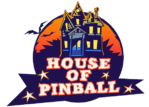While most pinball enthusiasts know the iconic American machines from Bally, Williams, and Stern, fewer are aware of Japan’s lesser-known—but deeply fascinating—history with pinball. Though pinball never exploded in Japan the way it did in the U.S., the country carved out its own niche with a unique design philosophy, engineering approach, and hybrid gameplay experiences.
At House of Pinball, we help collectors and newcomers alike understand what they’re buying—and why certain machines stand out. Whether you’re searching for a rare collectible or the right pinball machine for sale, understanding Japan’s influence on the pinball world gives you a sharper eye.
🏁 Japan’s Early Exposure to Pinball
Pinball first arrived in Japan in the post-World War II era, brought in by U.S. military personnel. The machines found homes in base recreation centers, bars, and later, amusement arcades.
But while the U.S. was making games with large mechanical parts and increasingly advanced electromechanical systems, Japan had something else brewing: a homegrown fascination with vertical ball games.
Enter: Pachinko.
🎯 Pinball vs. Pachinko: Cousins, Not Clones
Although often confused, pinball and pachinko evolved in parallel—but with very different intentions:
| Feature | Pinball | Pachinko |
|---|---|---|
| Objective | Skill-based gameplay | Chance-based gambling |
| Ball Direction | Horizontal (player controls ball) | Vertical (balls fall via gravity) |
| Flippers | Yes (adds player skill) | No (no direct player interaction) |
| Outcome | Game scores or multiball | Ball payouts or tokens |
| Industry | Arcade and amusement | Gambling (regulated industry) |
Japan’s arcade culture leaned heavily into pachinko and video games, meaning that American-style pinball machines remained niche.
🧪 Japanese Takes on Traditional Pinball
Still, a few Japanese companies dipped their toes into pinball design, bringing a uniquely technical and artistic approach.
🎮 Sega (Later Sega Pinball Inc. in the U.S.)
Sega manufactured both arcade games and pinball machines. While their U.S. subsidiary made pinball titles like Baywatch and Frankenstein, the Japanese parent company was more known for hybrid machines combining video game elements with mechanical pinball parts—a precursor to today’s LCD-equipped pins.
🕹️ Other Notables
- Nishijin and Heiwa created pachinko-pinball hybrids
- Machines often included anime themes, mechanized playfields, or electronic scoring
- Some rare titles include Japanese-exclusive pinball cabinets inspired by pop culture
While many of these machines are hard to find today, collectors often seek them for their experimental nature and artwork.
🎨 A Different Design Philosophy
Japanese pinball design focused on:
1. Compact Cabinet Size
Due to space constraints in Japanese arcades and homes, cabinets were often narrower or more vertical.
2. Aesthetics First
Machines prioritized art direction and light shows, often with an emphasis on fantasy or sci-fi—mirroring the anime and gaming industries.
3. Mechanized Gimmicks
Expect pop-up toys, multi-level ramps, and robotic features that feel more like miniature engineering marvels than traditional pinball playfields.
This design philosophy resonates with modern collectors looking for a pinball machine for sale that’s truly different from what’s found in U.S. models.
🧠 Why Japanese Pinball Matters for Today’s Buyers
Even if Japanese-designed machines are rare in the Western market, understanding their evolution gives buyers a broader perspective on what’s available—and what’s worth collecting.
Here’s how it can guide your buying decisions:
✅ Looking for Innovation?
Machines with hybrid video/pinball playfields (like Sega’s later games) offer a bridge between classic pinball and modern arcade tech.
✅ Want Something Visually Unique?
Japanese cabinets tend to have bold art, neon lighting, and culturally inspired themes that stand out in any home or game room.
✅ Building a Diverse Collection?
Including a Japanese or Japanese-inspired machine helps showcase the global influence of pinball and offers a fresh playstyle for guests and family.
🔍 What to Look For When Buying
When evaluating a Japanese machine or Japan-influenced title, here’s a quick checklist:
| Checkpoint | Why It Matters |
|---|---|
| Availability of Parts | Some parts may be harder to source; check compatibility |
| Playfield Condition | Imported models may have wear from climate or storage |
| Flipper Response | Some Japanese models use non-standard flipper mechs |
| Artwork Authenticity | Anime-themed machines can have counterfeit art elements |
| Voltage Conversion | Ensure compatibility with U.S. power standards |
At House of Pinball, we verify and test every machine—especially imports or limited-run models—so you can shop with full confidence.
🛒 Japanese-Inspired Machines Available Now
While original Japanese cabinets can be hard to find, we regularly stock Japanese-inspired titles like:
- Sega’s Godzilla (2000s version)
- Bandai Namco crossover-themed pins
- Homebrew anime cabinet builds (ask for availability)
Visit our pinball machine for sale page to browse available stock or request a custom search.

